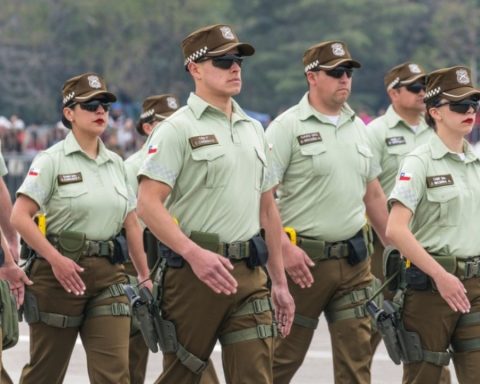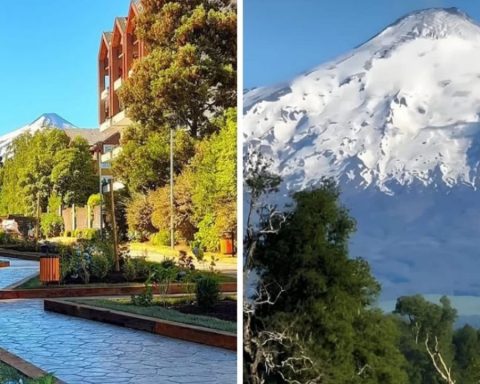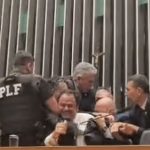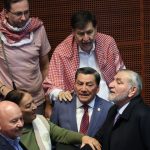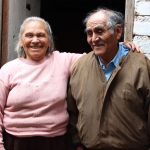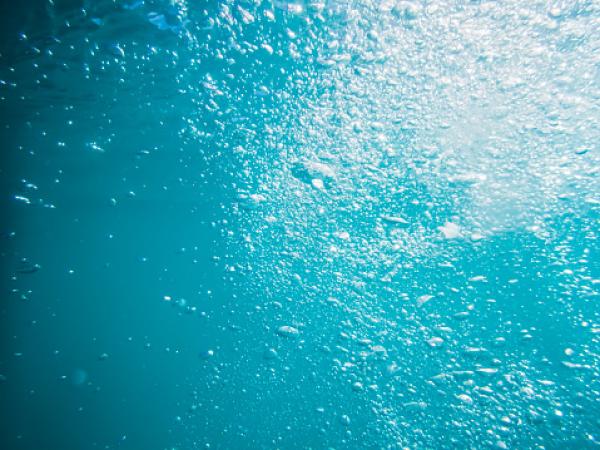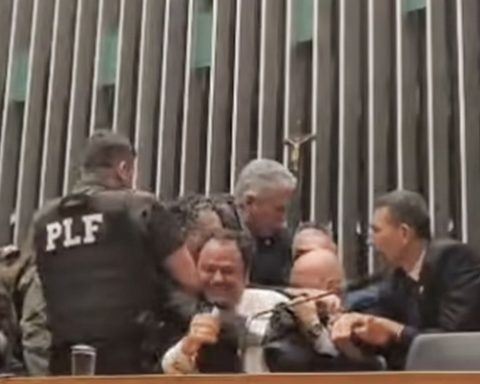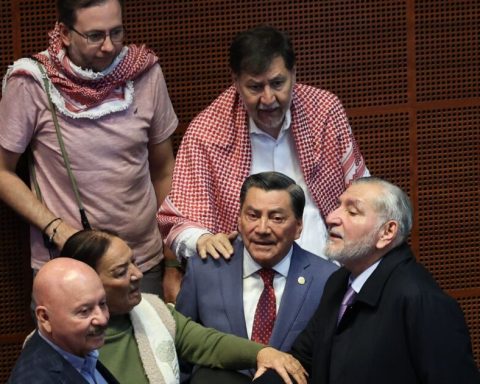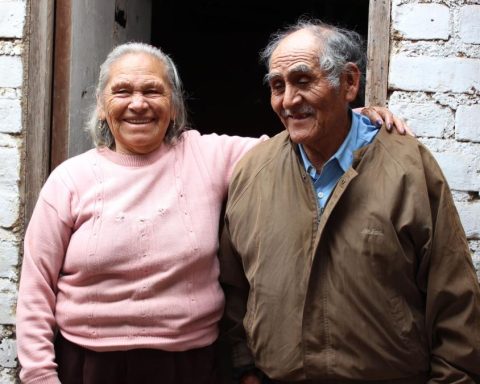In Quintero, the wind that blows is loaded with lead, arsenic and other toxic fumes. That’s what one of its residents, Orlando Denis, 82 years old, says when he remembers what the commune was like before the arrival of the companies located in the Quintero-Puchuncaví industrial cordon.
“Around the 1950s, the industries began to arrive. First, Enami (National Mining Company) arrived, and then how many more? Nineteen today? Before, for example, in Quintero, Puchuncaví or Ventanas, they he cultivated the land, he harvested lentils, peas, but today the land and the sea are dead, nothing grows. There are many people I have seen die of cancer, but there are no statistics on that, why? “he asks.

-Did you never think of leaving Quintero?
-One gets used. Quintero is humble, he has no choice. First, industries arrive and generate resources, then they employ young people so that they depend on them and, in the end, the elderly and school children get sick as “collateral” damage from the same industries that give us trouble.
The Quintero-Puchuncaví industrial park is a sector of approximately 5 kilometers, located on the coast of the Valparaíso Region. It covers around 500 hectares, where more than 16 high-risk companies operate, which have been investigated and sanctioned on multiple occasions.
“
Orlando is one of the participants in Hogar de Cristo’s Elderly Meeting Center, focused on the community’s oldest and most vulnerable population. A space full of joy and activity, where the elderly, through sports activities, psychosocial support and therapeutic care, find a way out of loneliness and poverty.
For Orlando Bernal (33), a social worker at Hogar de Cristo, being an elderly person in Quinteros is not the same as being in another commune in Chile. “This for specific health problems, such as asthma, heart problems, cancer. Many times we have had to stop physical tasks or we have had to transfer older adults to the emergency room due to vomiting, dizziness, low blood pressure, fainting.”
Orlando’s field experience has a foothold in the studios. In October 2018, an investigation carried out by the Medical Association after the massive intoxications that affected more than 1,700 inhabitants of Quintero and Puchuncaví that month, warned that the detected gases could cause genetic damage and cancer. A new study conducted by eight scientists from Chile, Russia and the United States warns that the concentrations of heavy metals present in the soil surrounding the Ventanas Industrial Complex pose a risk of cancer for children and older adults in the area.
toxic land

There are two things that all Quintero children are used to. One of them is to see the sand of its beaches black with coal. The other thing is the smoke coming out of each of the companies that make up the industrial chain that gave these towns, which add up to 30,000 inhabitants, the sad status of “sacrifice zone”. “As an educator, I have taken fainting children to the hospital because they inhaled toxic fumes or because they ingested soil. A key point because everyone talks about toxic gases, but that nobody takes into account, is that the land in Quintero is acidic and harmful and it is right there where the children play, who end up vomiting, dizzy or losing the sensitivity of their legs ” , reveals Rosa (37), a kindergarten teacher at the Burbujita garden in Quintero, whose real name will remain anonymous.
Just over two months ago, Quintero’s Burbujita and Bambi gardens were evacuated after verifying the presence of hydrogen sulfide, a colorless flammable gas that in high concentrations can be poisonous. To date, more than 265 children have received similar consultations at the Adriana Cousiño Hospital in the community.
“Every day we are sacrificing our children. The percentage of people who are sick with asthma, cancer or have special needs, is double the number of a commune of similar size”, concludes Rosa.
Rosa’s statement fits with the results of the study carried out by the National Fund for Scientific and Technological Development (Fondecyt), which found that “the carcinogenic risk due to exposure to arsenic was higher than the threshold value of 10-04 in the population of young children (ages 1 to 5) in 27% of the study area. The investigation extracted 245 soil samples near the industrial complex of Quintero and Puchuncaví to determine toxic concentrations of copper, arsenic, lead and zinc.
The crisis of August 2018
For most of the inhabitants of Quintero, the 2018 episode, which led to several poisonings between August and October of that year, has been the worst. In less than two months, more than 1,300 people were treated for poisoning episodes and 16 of them had to be hospitalized.
“I remember those days with a lot of anger,” says Gabriela Lara (80), a participant in the Hogar de Cristo Meeting Center for the Elderly, in Quintero. “I was with my husband when a terrible dizziness began to come on me, and my eyes and nose began to close, I could hardly breathe, it was the smell of coal and burning tires.”
The headquarters of the Meeting Center for the Elderly is located in the center of Quinteros, a sector where a large part of the toxic gases decant. “It’s sad because the older people who come here are very lonely and closing the program would be critical for them,” says Ruben Bugeño (35), a kinesiologist with the program. “In addition to food and medicine, older people need to stay active and move, if they don’t fall quickly into depression. Denying them the possibility of staying active and in force, because in their commune sulfur dioxide is through the roof, is outrageous”.
From the municipality, Patricia Lucarelli, in charge of Quintero’s social programs, declares that “you can’t do much more than deliver information and suspend physical education activities for older adults. This is an issue that corresponds to Health or the Hospital, we as a municipality can do no more than suspend classes.
According to the Social Registry of Homes, more than 70% of the population of Quintero is in the section of greatest social vulnerability. Suffering shortages in food, health, work, social security and housing. “For the majority of the elderly in Quintero, the factors to consider intersect: many have their children working in the companies of the industrial cordon, which are the same ones that pollute and put their health at risk.”
Final measures?

From June to date, more than 650 health care visits have been registered for the effects of poisoning by unidentified gases, most of those affected correspond to the elderly, children and adolescents. A reality that from the Regional Secretariat of the Ministry of Health of Valparaíso has addressed “delivering the background information to the Presidential Delegation. This made it possible to generate eleven Critical Episode Management declaration resolutions, forcing the companies in the industrial radius of Quintero and Puchuncaví to adopt protective measures due to unfavorable atmospheric ventilation conditions.”
Katta Alonso (69), founding member and spokesperson for the Mujeres de Zona de Sacrificio group, is not so sure that anything will change in the medium term. “Unfortunately, the Chilean regulations are very lax and from the year of the cuete, insufficient to control what has happened here. The Superintendence of the Environment does not have a budget to control and, in addition, there are three cats”.
In July 2022, the Undersecretary of Public Health, Cristóbal Cuadrado, visited Quintero to give the go-ahead for the study called “Health Situation of the inhabitants of the communes of Quintero-Puchuncaví-Concón, associated with determinants of health 2022”. The initiative, currently underway, seeks to know the prevalence, characteristics and risk factors of diseases, in a statistically representative sample of the population over one year of age in these communes, which is a total of 1,267 people.
“It is to be hoped that now they at least know our situation,” reflects Nicolás Villarroel (81), a native of Quintero and a participant in Father Hurtado’s organization. “It’s hard for me to get to the Hogar de Cristo, my eyes hurt and my throat itches, I’ve vomited and I’ve drowned like everyone else, but it’s worth it, because I talk here, I have friends, I play sports and it’s the last thing that it’s staying.”

